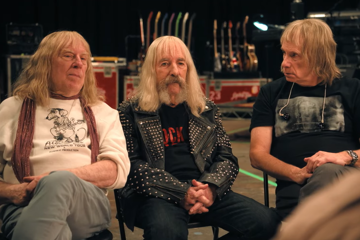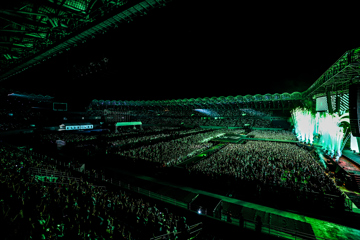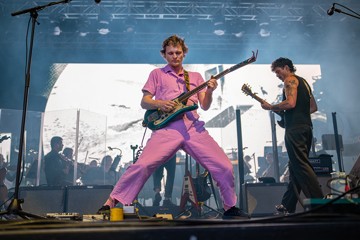Who Am I, Anyway? The Art Of Discovering The Self At MOFO
"Sound is a very physical thing. It really impacts on your body, so it's a good medium to explore traumatic experiences."
Most artists use the self in some way, even if they'll deny it; subjectivity is a lens none of us can entirely remove. The revered 17th-century painter Rembrandt famously employed his self-portraits as a means of experimentation and analysis, rather than documents of a life. He was interested in boring down into the self rather than putting it on show. The French philosopher Montaigne did something similar in the century prior with his Essais, digressive morsels of thought that centred on his own mind and its shifting preoccupations.
But we tend not to think of sound designers as introspective; pure abstraction rarely seems autobiographical. It seems, however, that several artists heading to Hobart for MOFO may just change that perception, approaching the idea of the self in entirely original ways.
Sound artist Thembi Soddell's Held Down, Expanding is a single-person immersive sound installation that uses seven speakers and a small, dark room to explore ideas of trauma, psychological damage and power relations. "I'm interested in this idea of complete mental breakdown, and the ways you come back from that", Soddell explains. "Sound is a very physical thing. It really impacts on your body, so it's a good medium to explore traumatic experiences."
Not that Soddell's work is directly autobiographical or merely therapeutic. "With art therapy, the therapy is the point; the art is basically irrelevant. But with the work I do, the therapeutic element is a by-product of the art." Soddell has worked for the last decade in the field of meditation and mindfulness, and it's sharpened her aural awareness. "But really I've always been sensitive to noise. I used to vacuum without turning the vacuum cleaner on, because I was scared of the noise it made!"
Scot Cotterell, who forms one half of the conceptual art duo Evil Goat, creates what he labels 'Doom Noise'; a sonic beast that's difficult to categorise except to say that it shares quite a bit of DNA with metal and trance music. "The [band's] name came from my seven-year-old daughter", he recalls. "She was having bad dreams and drew a picture of an evil goat. This struck us as a cool band name and we kind of went from there." Like Soddell, Cotterell sources a fascinating array of materials in order to fashion extraordinary ambient soundscapes, from "tapes, cheap synths, damaged equipment or faulty microphones. It lends itself to the ad hoc."
Don't miss a beat with our FREE daily newsletter
While both artists deal in dark material, neither comes across as gloomy or joyless - a salient, rather Jungian reminder that personality and selfhood are entirely separate concepts. Soddell has "always been fascinated by the ways in which an artist's work can reveal aspects of the artist's self", but it is rarely a simple matter of cause and effect. "I remember I made one piece about really dark material and audiences were telling me how happy it sounded," she laughs.
Cotterell is equally reticent to lock in audience responses - indeed he finds the audience's reactions, "not irrelevant, exactly, but almost secondary. [Evil Goat's] work is quite improvisational, so it's almost a matter of 'whatever happens, happens'. That's not to say that the audience doesn't matter, but we are trying to achieve an intensity that exists for a short moment, and we're not really explicit about the kind of space we're trying to create."
Where most bands or musical acts are interested in creating a shared experience, a sense of community, Soddell and Cotterell are interested in exploring something almost diametrically opposed. An Evil Goat gig is not like attending a regular metal or rock concert, and Soddell's piece is deliberately designed to be undertaken solo. It's as if the introspection needed to create the art is mirrored in the effect it has on the listener.
Cotterell admits to a tendency to physically ignore the audience, "focusing on creating a shared space but not really engaging with people in an overt way." Soddell isn't engaging with her audience at all with Held Down, Expanding because she's not even present when the audience members go in. It could be easy to read this as a distancing technique, but this seems a distortion of the artists' intent.
"It's cathartic when I perform," explains Cotterell, although he follows quickly with a caveat: "I'm a quiet sharer, so it's not a physical or visceral catharsis; it's more a sense that something worked, or went somewhere or was something." This sense of the artist creating something tangible, something able to be shared and communicated, out of the ephemera of the self - what Sondheim referred to as "finishing the hat" - is at the heart of these two artists' work. As Soddell explains, "Music is amazing because it can articulate the parts of us that can't be explained in words." A more direct path to the self, perhaps.







